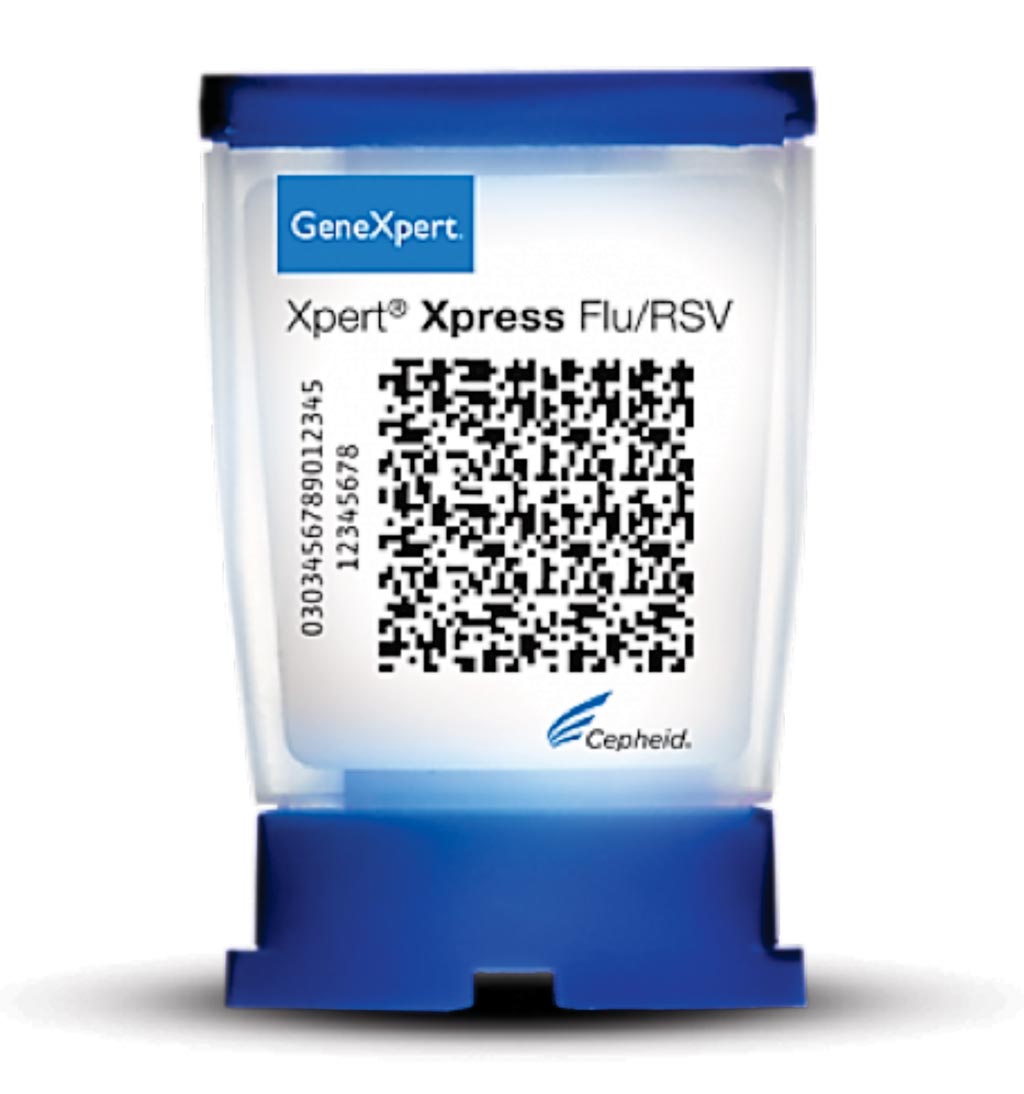Saliva Specimens Diagnose Respiratory Virus by POC Assay
By LabMedica International staff writers
Posted on 05 Jul 2018
The use of saliva as a specimen for the detection of respiratory viruses has been proposed as an alternative to nasopharyngeal aspirate or nasopharyngeal swab: saliva may have the advantage to cause less discomfort in patients and less risk for healthcare workers.Posted on 05 Jul 2018
Automated point-of-care molecular assays have greatly shortened the turnaround time of respiratory virus testing. One of the major bottlenecks now lies at the step of the specimen collection especially in a busy clinical setting. Saliva is a convenient specimen type, which can be provided easily from adult patients.

Image: The Xpert Xpress Flu/RSV Assay Cassette (Photo courtesy of Cepheid).
Scientists from the University of Hong Kong (Pokfulam, Hong Kong) recruited between July and October 2017, 214 patients and carried out a prospective diagnostic validity study comparing the detection rate of respiratory viruses between saliva and nasopharyngeal aspirate (NPA) among adult hospitalized patients using Xpert Xpress Flu/RSV. The cost and time associated with the collection of saliva and nasopharyngeal specimens were also estimated.
The team found that the overall agreement between saliva and NPA were 93.3% (196/210). There was no significant difference in the detection rate of respiratory viruses between saliva and NPA; (69/210 (32.9%) versus 75/210 (35.7%). The overall sensitivity and specificity were 90.8% (81.9-96.2%) and 100% (97.3-100%), respectively, for saliva, and were 96.1% (88.9-99.2%) and 98.5% (94.7-99.8%), respectively, for NPA. The time and cost associated with the collection of saliva were 2.3-fold and 2.6-fold lower, respectively, than those of NPA.
The authors concluded that saliva specimen had high sensitivity and specificity in the detection of respiratory viruses by an automated multiplex Clinical Laboratory Improvement Amendments (CLIA)-waived point-of-care molecular assay when compared with that of NPA. The use of saliva also reduces the time and cost associated with specimen collection. The study was published on June 12, 2018, in the journal Clinical Microbiology and Infection.
Related Links:
University of Hong Kong














